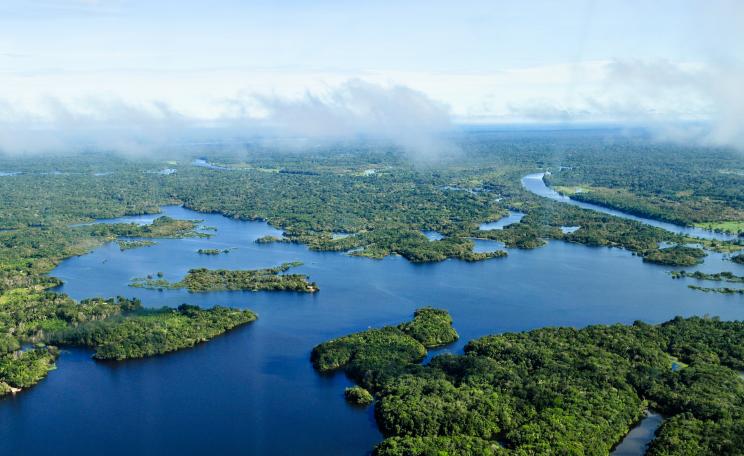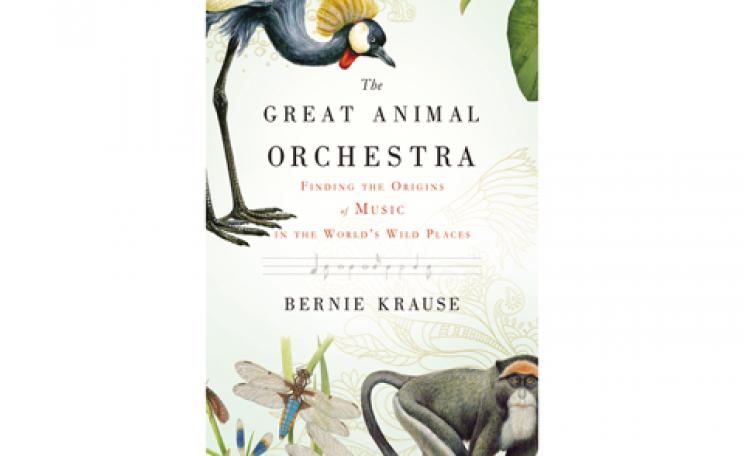A magnificant Rufescent Tiger-heron
The story of the Yacuma is a model of the way ranching, tourism, indigenous communities, and wildlife can coexist.
The dugout canoe glided slowly forward through the still, dark water of the river. Evening was falling quickly over the Yacuma Pampas in Bolivia’s Amazon, and confetti light fell across the water. The boat’s driver, a local man, had turned off the outboard motor and raised it from the water. He was taking short strokes with a wooden canoe paddle, easing us silently along toward a pair of birds sitting stock-still, in the riverside vegetation.
I raised my camera, clicked a few frames, paused as we moved closer, and snapped a few more. The two birds, an adult and a juvenile Rufescent Tiger-heron, were motionless. A few feet closer and the adult twitched its eye, tensed. I raised my hand, and the boatman slowly backed off. The herons visibly relaxed as we drifted away.
Safely away from the birds the driver then lowered the motor, started it with a yank of the cable, and we buzzed away before the darkness engulfed the river. The heat of the day gone, and the wind in my face, I watched the gallery forest along the river whip past. Beyond the branches I could see the end of the forest where a vast expanse of open wetlands began. The flats, flooded, and filled with emergent vegetation, extended for miles.
It was the rainy season, though the day’s relentless sun hardly allowed me to believe it. But the river was at bank level and the surrounding areas were covered in a few inches of water. Depending on the elevation, some areas are flooded for six to eight months a year, others for just a month or two during the peak of the rainy season, while the highest points are covered in forest, creating small islands of trees in a wetland landscape.
Once, not so long ago, cows were the dominant animal of the Yacuma. They waded in herds through the wetlands, consuming the vegetation with abandon. Ranchers, eager for more grazing land, burned the gallery forest regularly. “Muchismas vacas,” my guide reflected, as he gestured across the open wetlands. The pampas were being devoured, slowly but surely, by the hungry mouths of the cattle, and tongues of flame set by the ranchers.
The story could have ended right there, with the Yacuma, like so many other areas of the Amazon being converted into cattle ranching, the wildlife and native vegetation driven from the landscape. Instead, the still-abundant wildlife began to draw tourists. Several species of monkeys, sloths, capybara, giant anacondas, two species of caiman (the South American crocodile), the rare Amazonian pink river dolphin or Boto, and innumerable birds, including the endangered Blue-throated Macaw, were surprisingly visible in the the wetlands and gallery forest.
The river provides a narrow corridor of forest where the wildlife concentrated, and on any given day, many of these species can be viewed at close range.
The story of the Yacuma is a model of the way ranching, tourism, indigenous communities, and wildlife can coexist.
In a moment of prescience the community realized the potential of this. They started charging a moderate fee to visitors of the Pampas, lodges sprung up, and suddenly, money and employment was entering the community without the need for any further destructive agriculture.
In exchange for a share of the tourism income, ranchers offered to reduce the number of cattle and stop burning the gallery forest. The vegetation returned, the wildlife flourished and before long the largest municipal protected area in the world was born, encompassing nine rural communities, over 170 different cattle ranches and encompassing 616,453 hectares.
Of course it wasn’t quite so straight-forward. Interested groups such as Conservation International stepped in to provide a guiding hand and help the community design the plan for the protected area, and infrastructure needed to be built to encourage and increase tourist traffic.
Today there are several accomodation options along the river which vary from tent camps to rustic, but comfortable lodges. And the community of Santa Rosa del Yacuma has now built a cultural and community center to give the protected area its own operational base.
Many national parks in developing countries are established in name only. Known derisively by the conservation community as “paper parks” they have little to no on the ground enforcement, or policing of borders. But because all aspects of the Yacuma Pampas protected area are run locally, the wetland is not plagued by these problems.
The model of the Yacuma is one that can be emulated elsewhere in the world, but unfortunatley will not work everywhere. There are a few required ingredients, the first is two forms of infrastructure: transportation and tourist. Visitors need a way to get to the destination and they need a place to sleep when the do. In this case the jungle outpost turned tourist town of Rurrenabaque provides the gateway. Rurre, about three hours from the Yacuma over a dirt road, has a variety of hotels, guide services, an airport, and (rough) road access from Bolivia’s major cities.
Similar biological hotspots in the neotropics and elsewhere must have, or be willing to invest in such infrastructure. In impoverished areas this may be difficult and will require input from federal governments or conservation NGOs.
Right now, the story of the Yacuma is a hopeful one. It is a model of the way ranching, tourism, indigenous communities, and wildlife can coexist. But the balance remains fragile, and relies entirely on the continued presence of tourism in Bolivia. Should political instability, revolution, a major decline in infrastructure, or a prolonged global recession occur, numbers of tourists could fall off. Andf if that happens it is reasonable to assume the community would return to more destructive agricultural practices.
Community-based land conservation is a valuable implement in the conservation tool-box, but not a magic bullet.
As the dugout canoe that I was in motored slowly up the river, a troop of howler monkeys broke into a roar. In the dusk, I could just make out their silhouettes high in the trees, their heads cocked toward us as we passed.
For a while at least, and perhaps much longer, the Yacuma Pampas is a rich and diverse place and it survives, ironically, because of its accessibility.
David Shaw is a wildlife biologist, writer, photographer, and guide living in Fairbanks, Alaska. Though he lives in the far north, the new world tropics hold a special place in his heart. Visit his website at www.wildimagephoto.com
Image of Tiger-Heron courtesy of www.shutterstock.com




